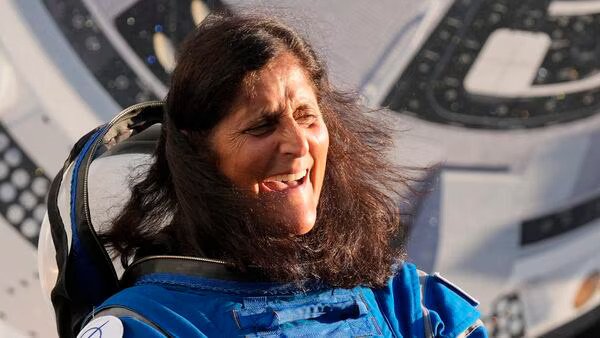In the event of a full-scale conflict, the terrorist Hezbollah organization in Lebanon claims to have upgraded its armaments and intelligence capabilities, which might enable it to target more vital locations within Israel.

In the event of a full-scale conflict, Lebanon’s Hezbollah might be able to strike more vital locations deeper into Israel thanks to its expanded arsenal of weaponry and intelligence capabilities, the terrorist group’s commander warned on June 20.
Hassan Nasrallah made his remarks the day after a top U.S. envoy met with Lebanese leaders in an effort to defuse tensions, and as the months-long cross-border war between Hezbollah and Israel seemed to be approaching a boiling point.
“We have new weaponry now. However, I won’t reveal what they are,” he said during a live speech honoring a senior Hezbollah leader slain in an Israeli airstrike in southern Lebanon last Thursday. “They’ll be visible on the front lines when the decision is made.”
For the first time since the Israel-Hamas war began in Gaza last October, Hezbollah has utilized surface-to-air missiles against Israeli planes in addition to deadly drones manufactured domestically.
Although Nasrallah stated in 2021 that Hezbollah had 100,000 fighters, he later stated, without providing details, that the figure is significantly greater. He said that he has turned down offers to bolster his numbers by tens of thousands from regional militias and friendly nations.
A almost 10-minute-long video, purportedly captured by a Hezbollah surveillance drone and made public on Tuesday, features scenes from Haifa, a city located far from the border between Israel and Lebanon. In his statement on Wednesday, Nasrallah said that Hezbollah had a lot more material, suggesting that it poses a danger to locations deep into Israel.
During a visit to Israeli air defense soldiers on Wednesday near the Lebanon border, Israel’s military leader, Lt. Gen. Herzi Halevi, stated that Israel was aware of the capabilities displayed by Hezbollah in the video and has countermeasures in place for these threats.
“The enemy is aware of only a fraction of our capabilities and will uncover them when necessary,” he declared.
Since the conflict in Gaza broke out on October 7, Hezbollah, an ally of the Palestinian terrorist organization Hamas, has been striking back at Israel virtually every day in an effort to drive Israeli forces out of the beleaguered Gaza Strip.
Attacks by Hezbollah intensified as Israel continued its drive into the southern Gaza city of Rafah last month. They also increased last week following the Israeli strike that killed Taleb Sami Abdullah, the highest-ranking Hezbollah commander and the most senior militant to be killed in the Israel-Hamas conflict.
The Israeli army said on Tuesday that it has “approved and validated” preparations for an attack in Lebanon; but, the political leadership of the nation would need to decide whether to actually carry out the operation.
Amos Hochstein, senior assistant to President Joe Biden, visited Lebanon and Israel last week in an effort to further defuse tensions, and both sides issued warnings thereafter. Hochstein stated to reporters in Berlin on Tuesday that the situation was “extremely serious” and that there was “urgent” need for diplomatic action to avert a wider conflict.
Citing Cyprus, which has hosted Israeli soldiers for training exercises, Nasrallah warned that a bigger battle with Lebanon would have regional ramifications and that Hezbollah would strike any other nation in the area that supported Israel.
The Houthi rebels in Yemen and the Hezbollah-aligned Iraqi militias will not stop their attacks on targets in the West and Israel without a cease-fire in Gaza.
Hezbollah is seen by Israel as its greatest direct danger, and the two sides engaged in a 34-day battle in 2006 that resulted in a draw. Since then, Hebollah’s military might has increased dramatically; according to estimates from Israel and the US, the group, together with other terrorist groups in Lebanon, possesses roughly 150,000 missiles and rockets. Additionally, Hezbollah has been developing precision-guided rockets.
Hochstein went to Israel for more discussions, but not before Hezbollah said that at least four of its militants had been killed in Israeli attacks on Wednesday.
The attacks were reported by Lebanese official media near the seaside city of Tyre, which is approximately 20 miles distant, and along the border. According to the Israeli military, many cars in northern Israel were destroyed by two Hezbollah rockets.
The head of the Amel Association, a non-governmental organization that offers healthcare services throughout Lebanon, Kamel Mohanna, stated that the Israeli bombardment had destroyed the association health center located in the town of Khiam.
Over 400 individuals have been killed in Israeli attacks in Lebanon, primarily Hezbollah and other terrorists, although there have also been over 80 civilian and non-combatant deaths. Strikes from Lebanon have killed 16 troops and 11 civilians in northern Israel.





